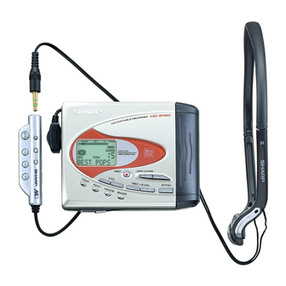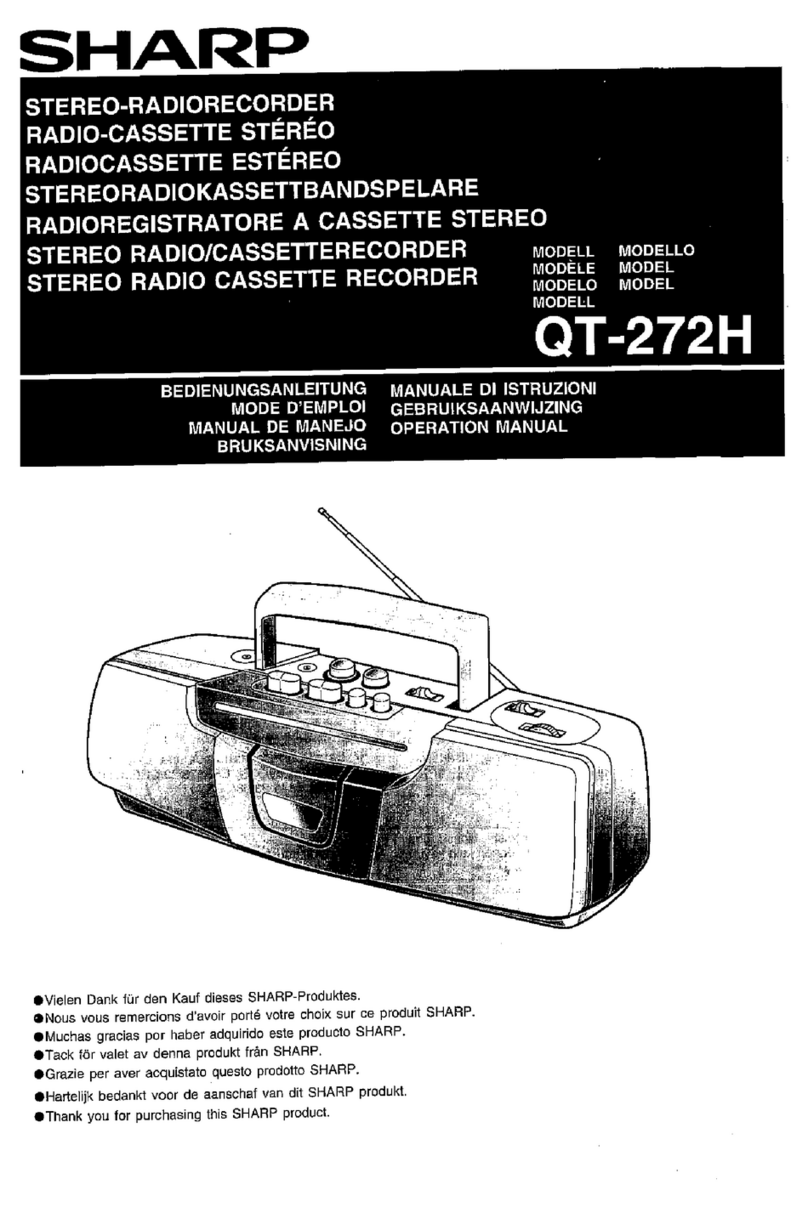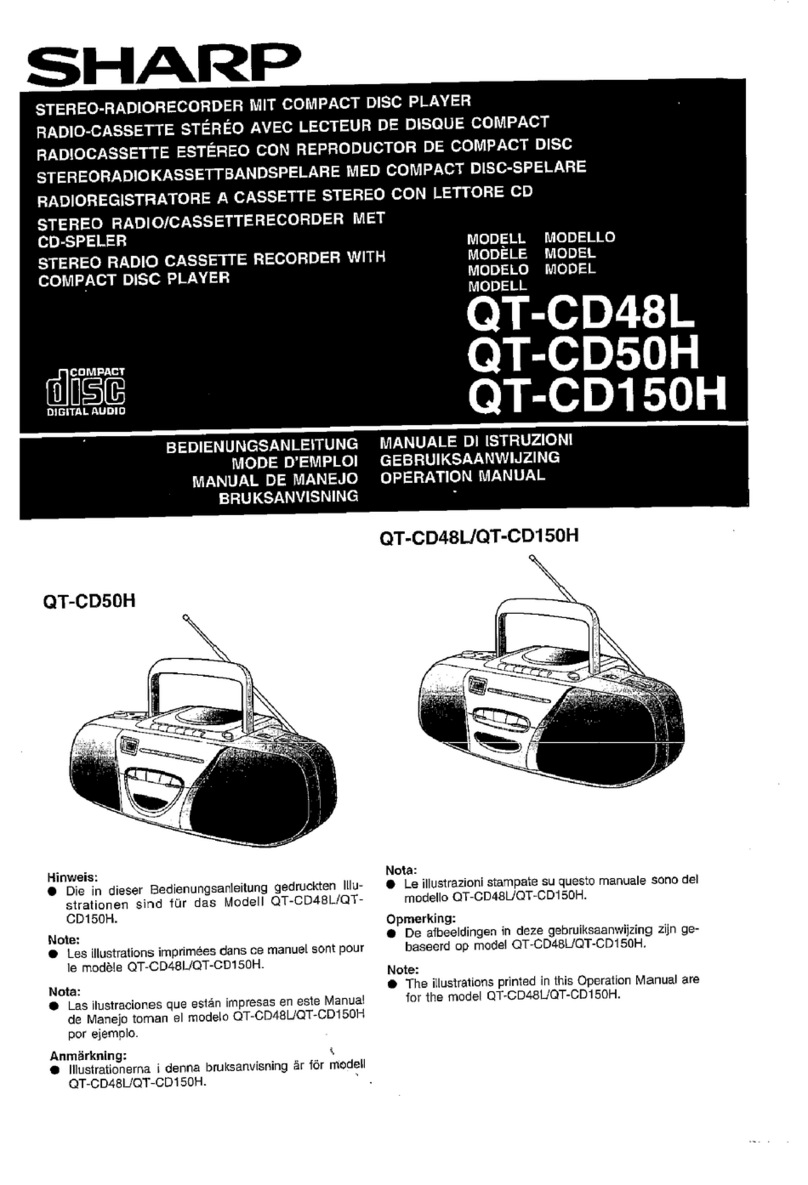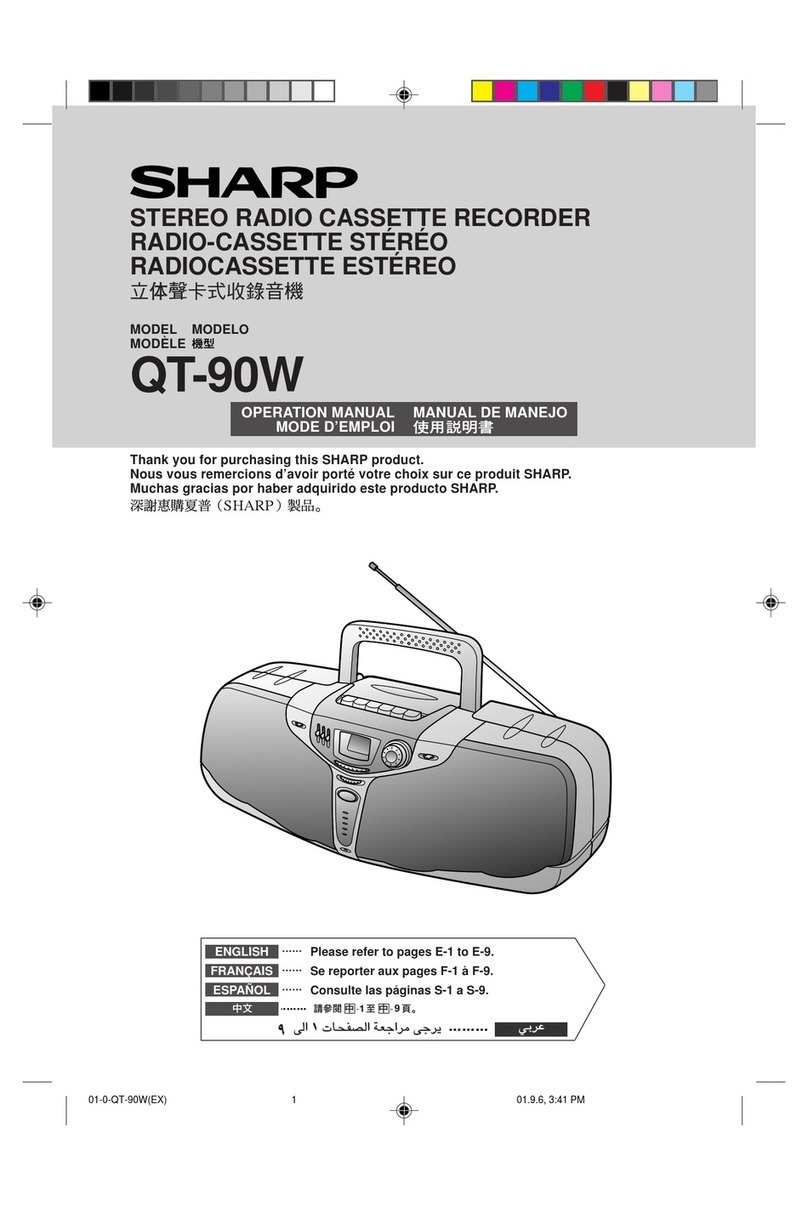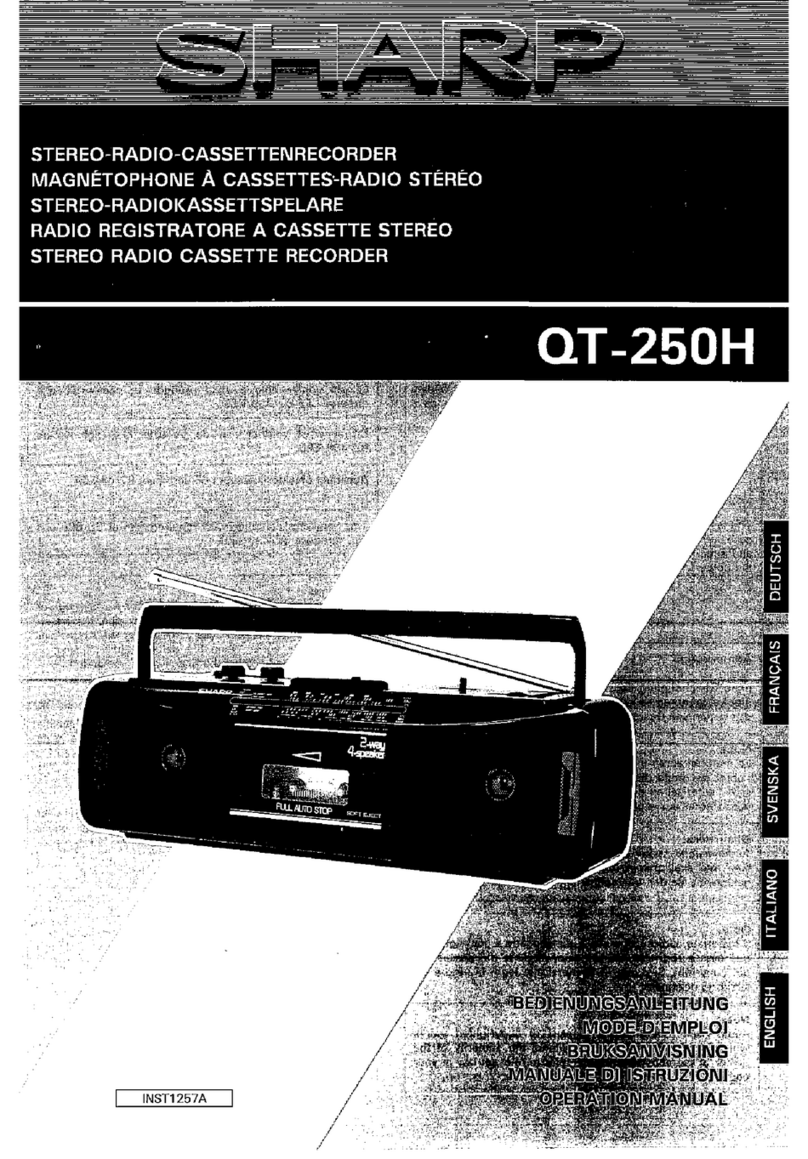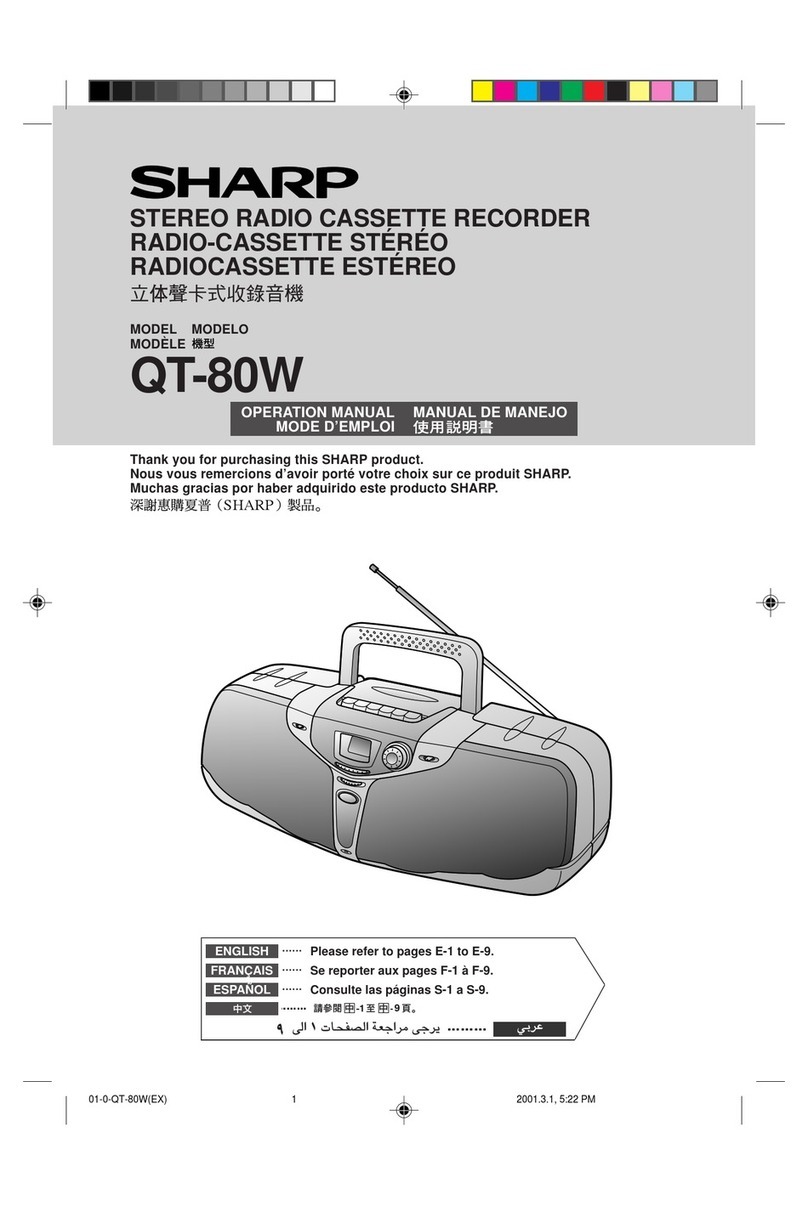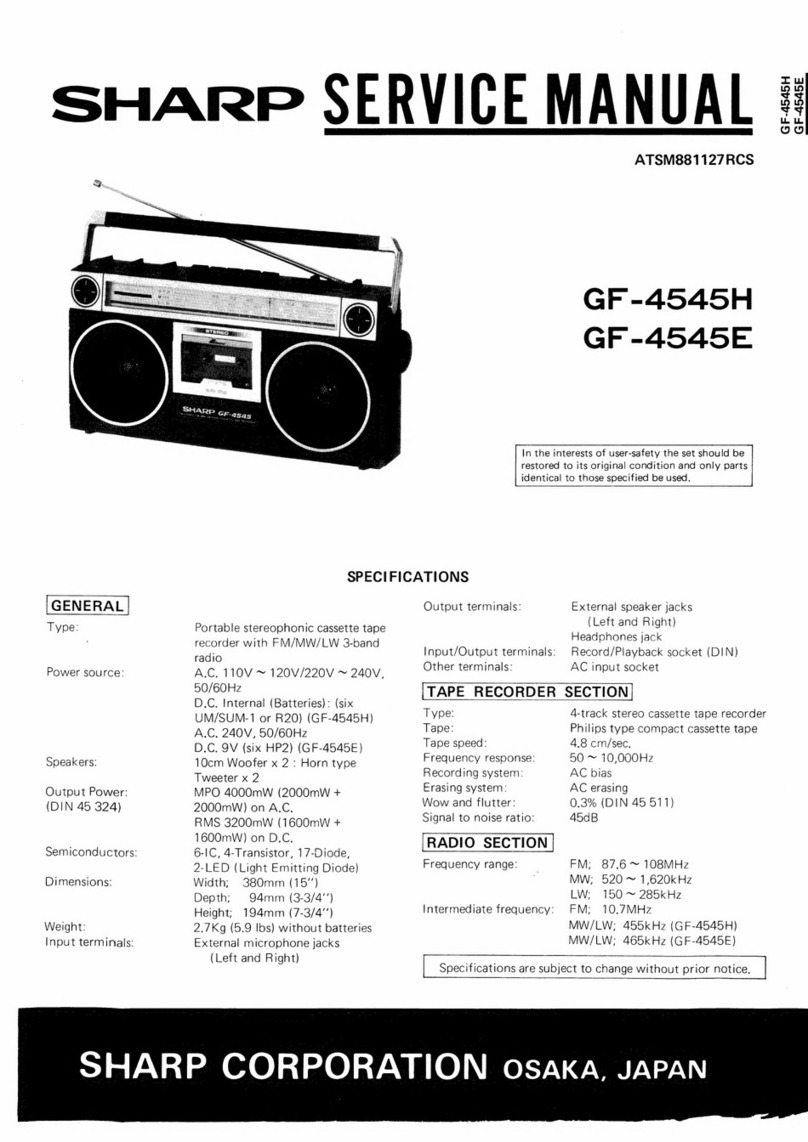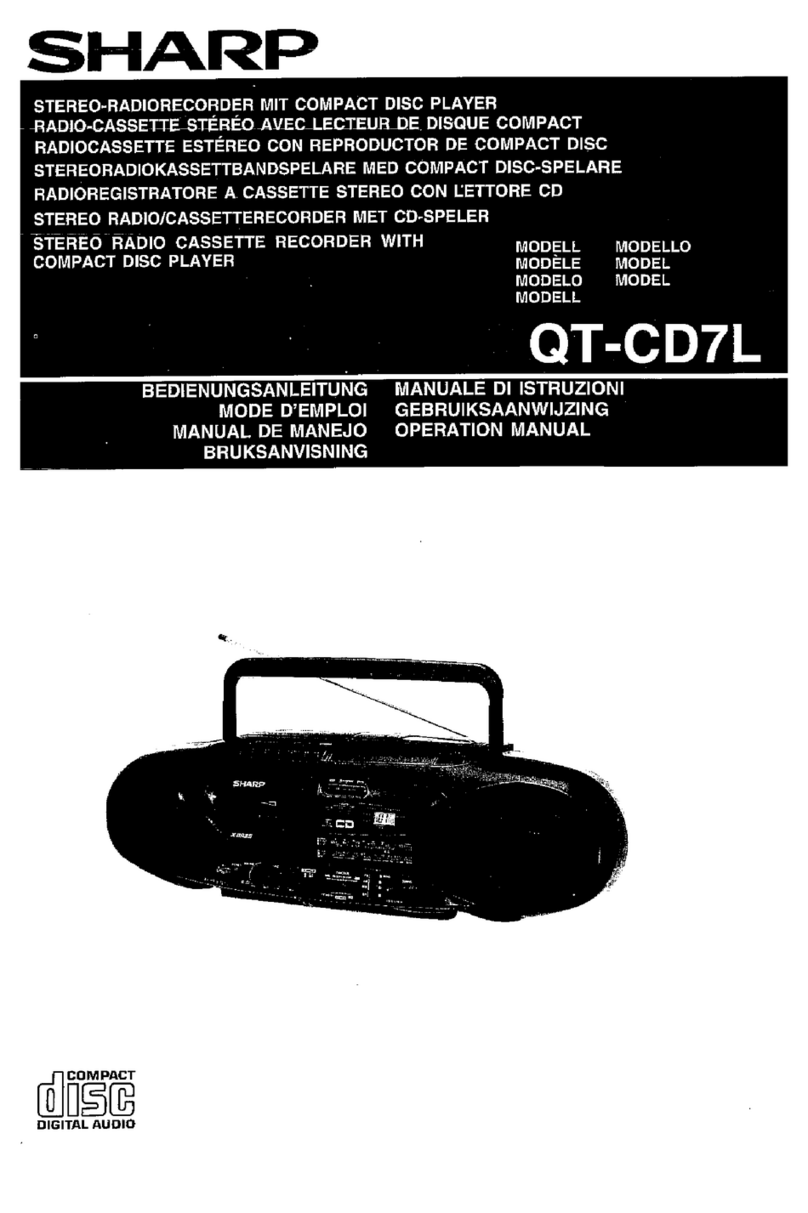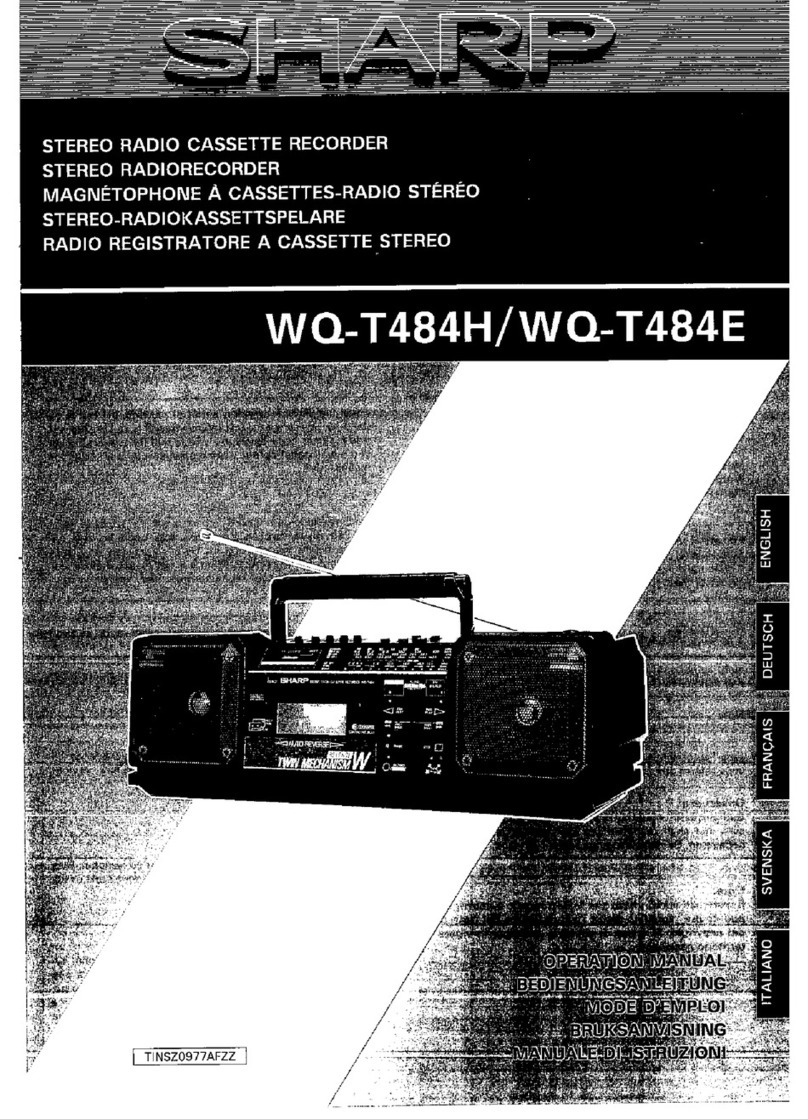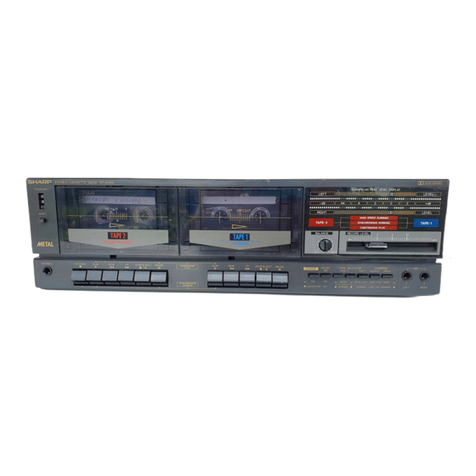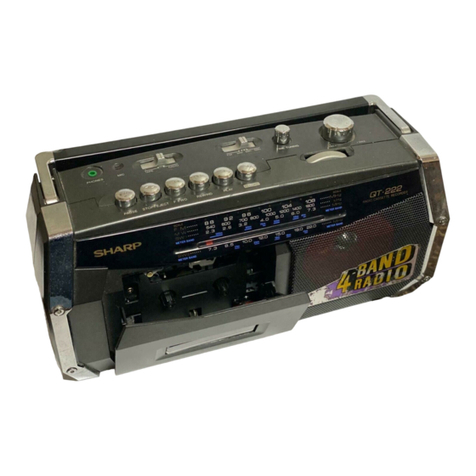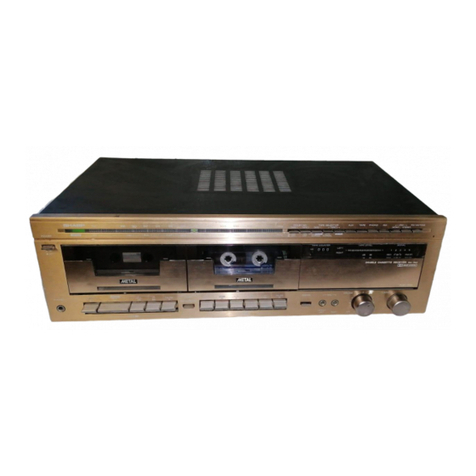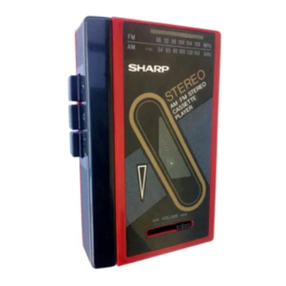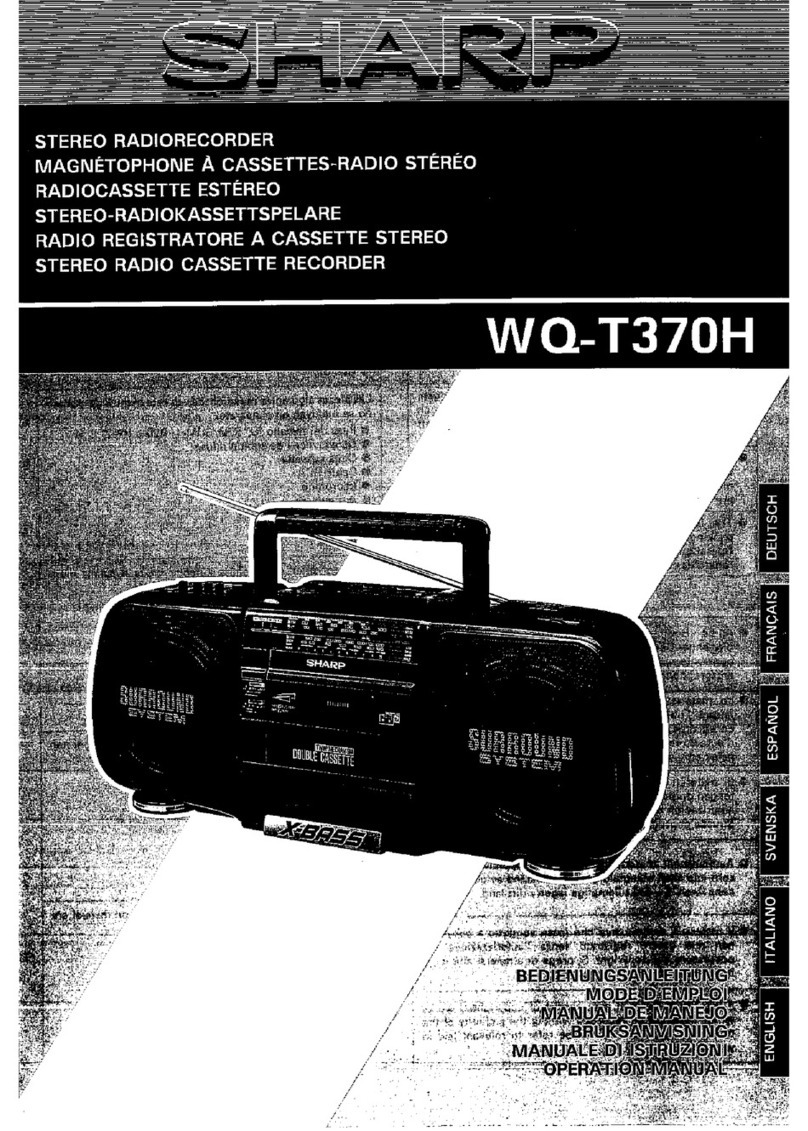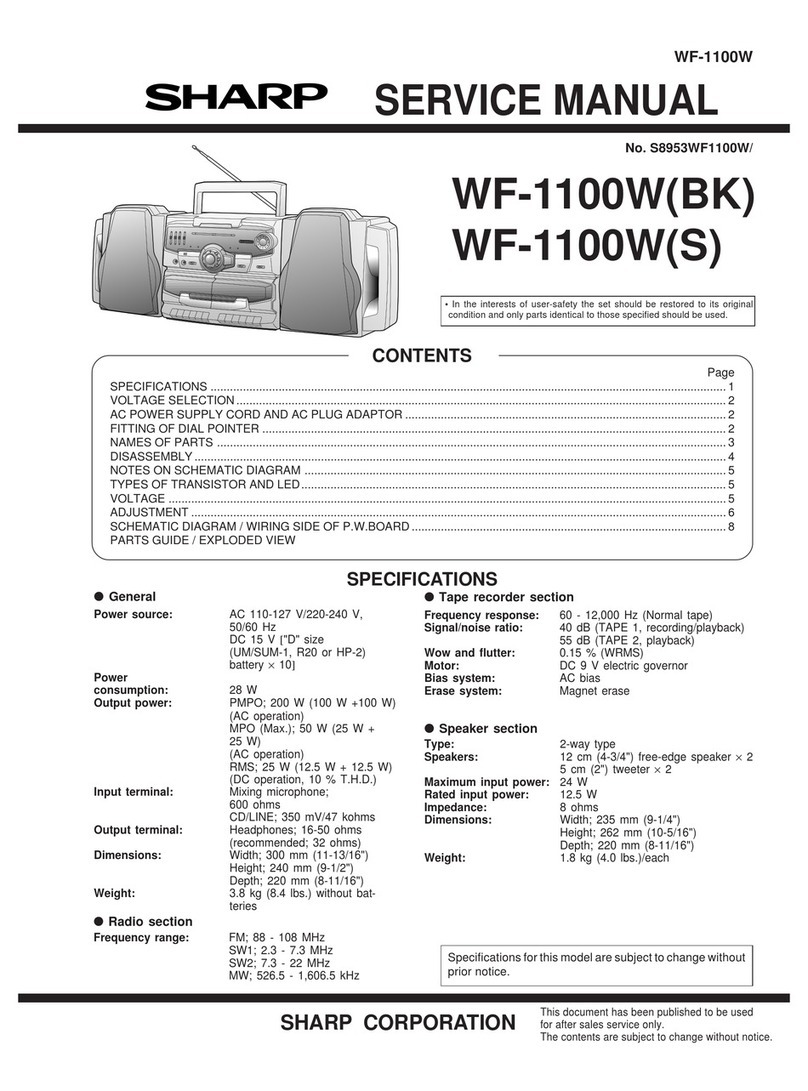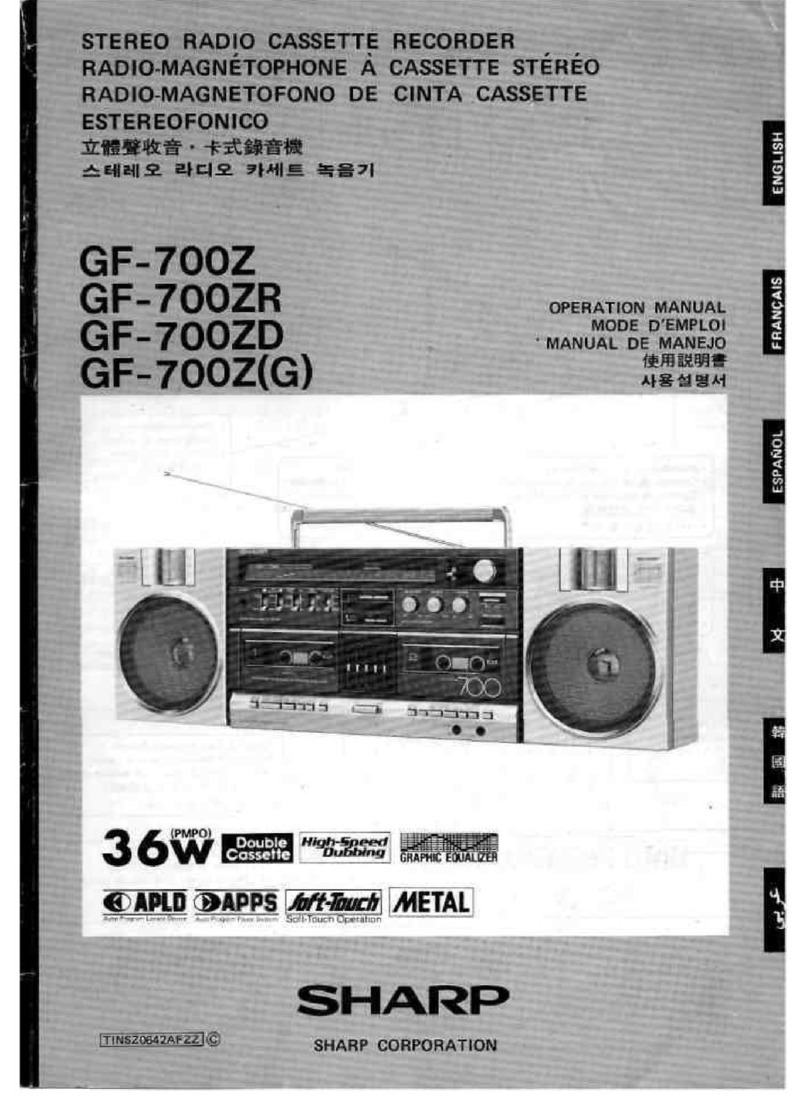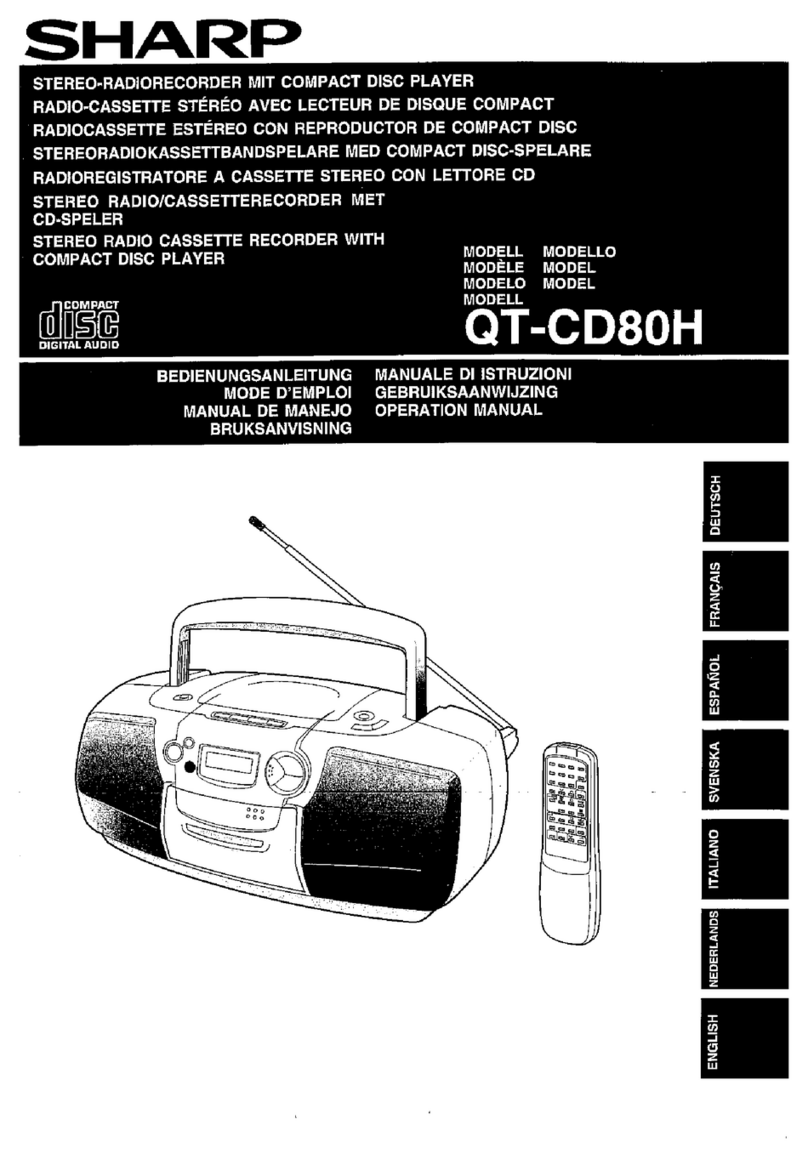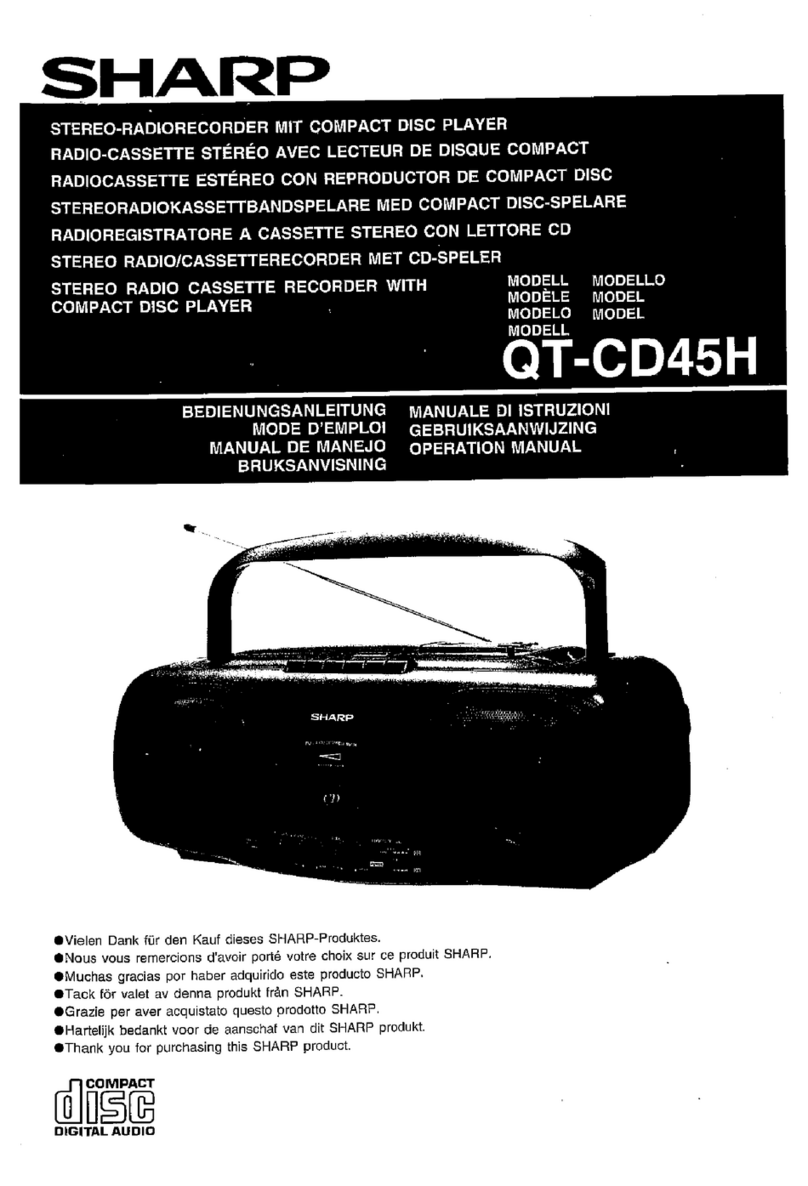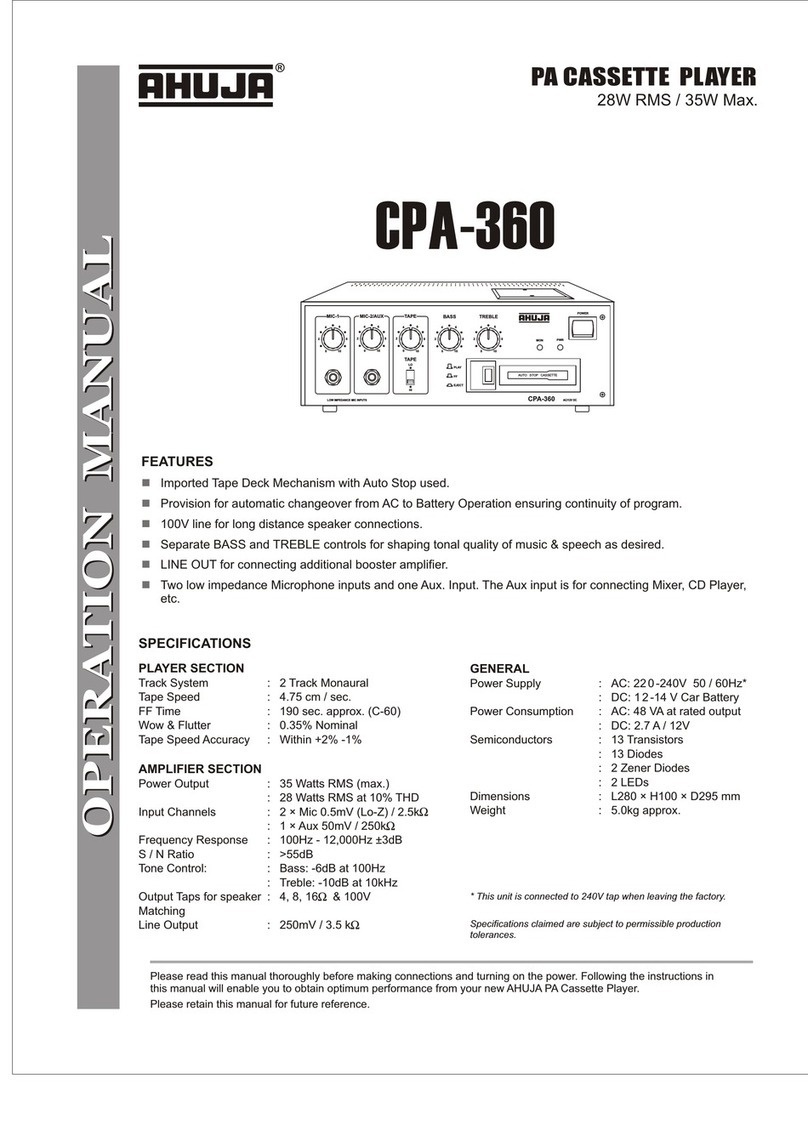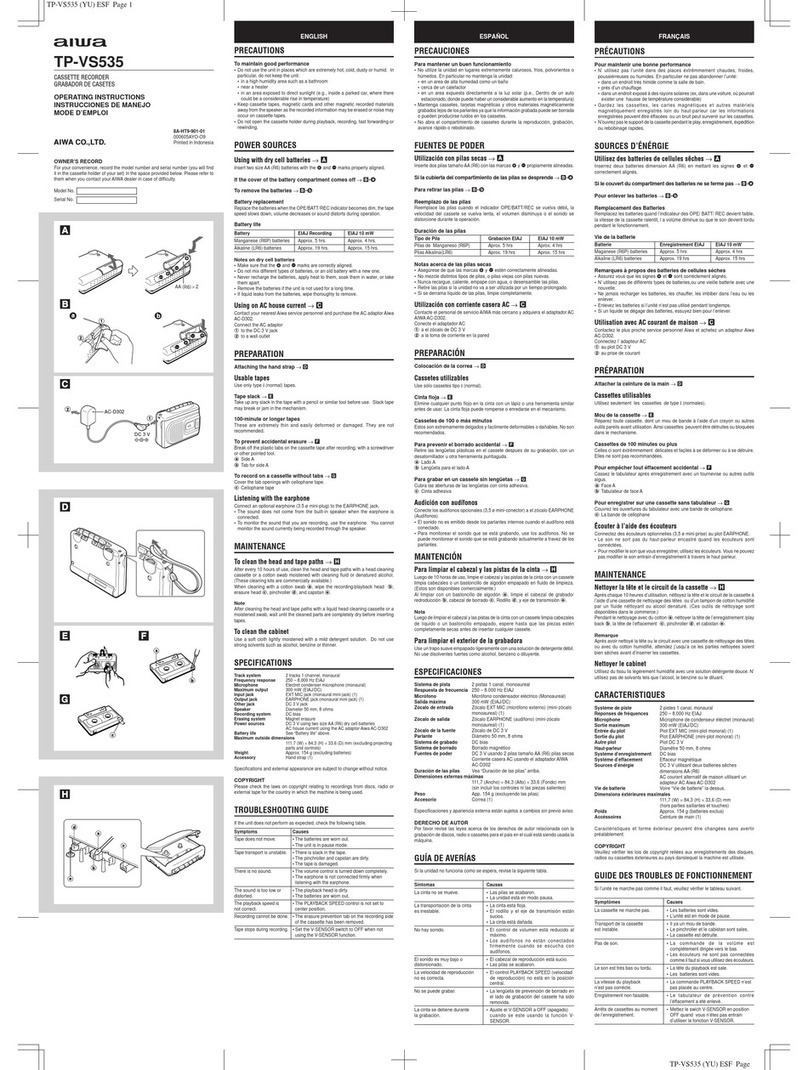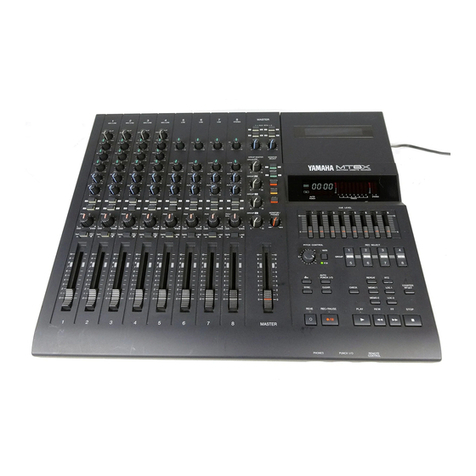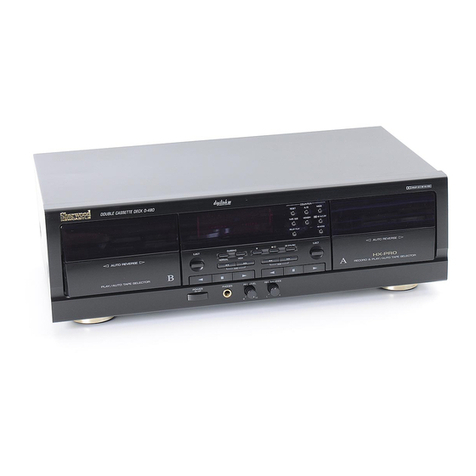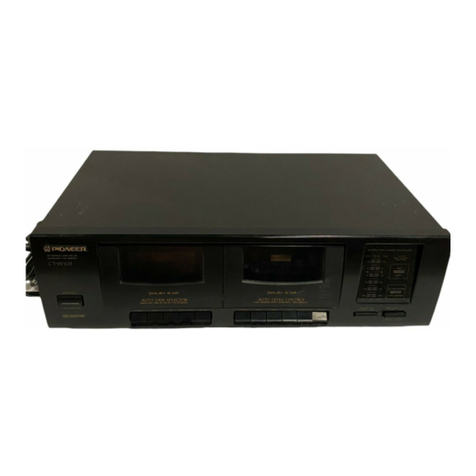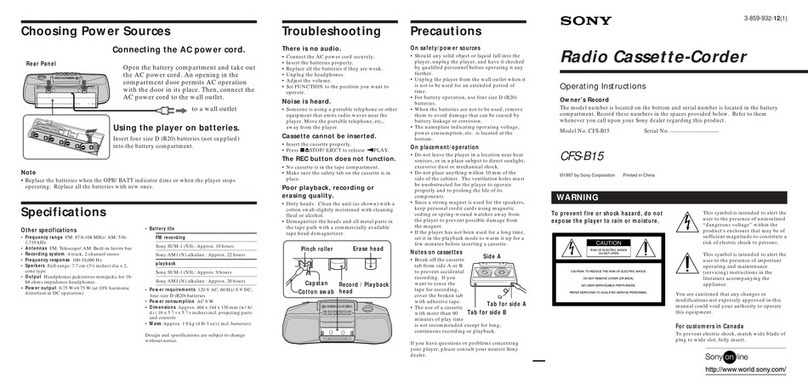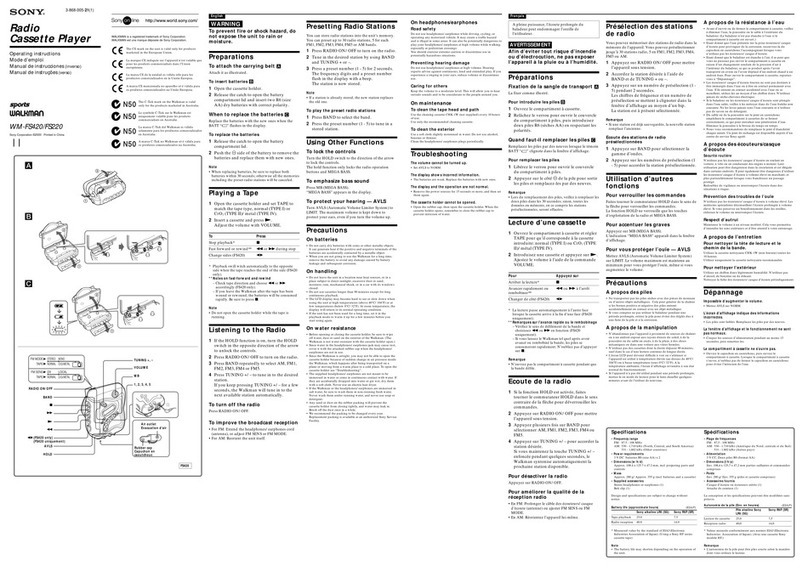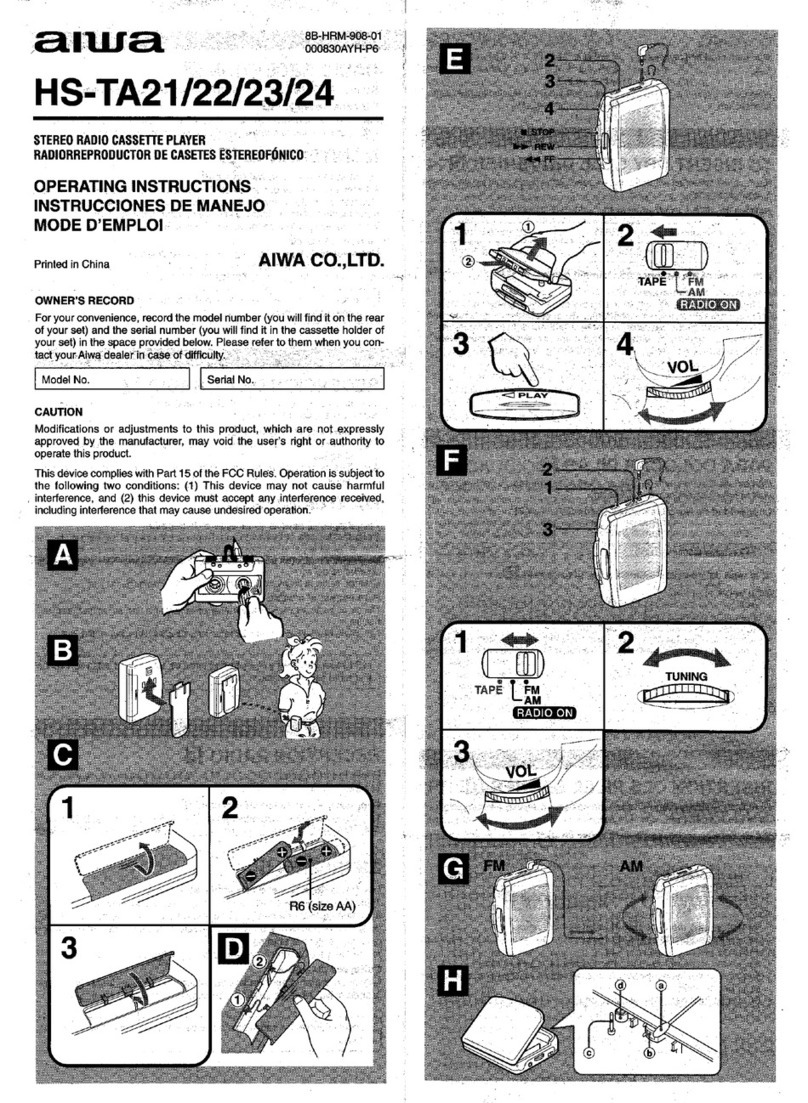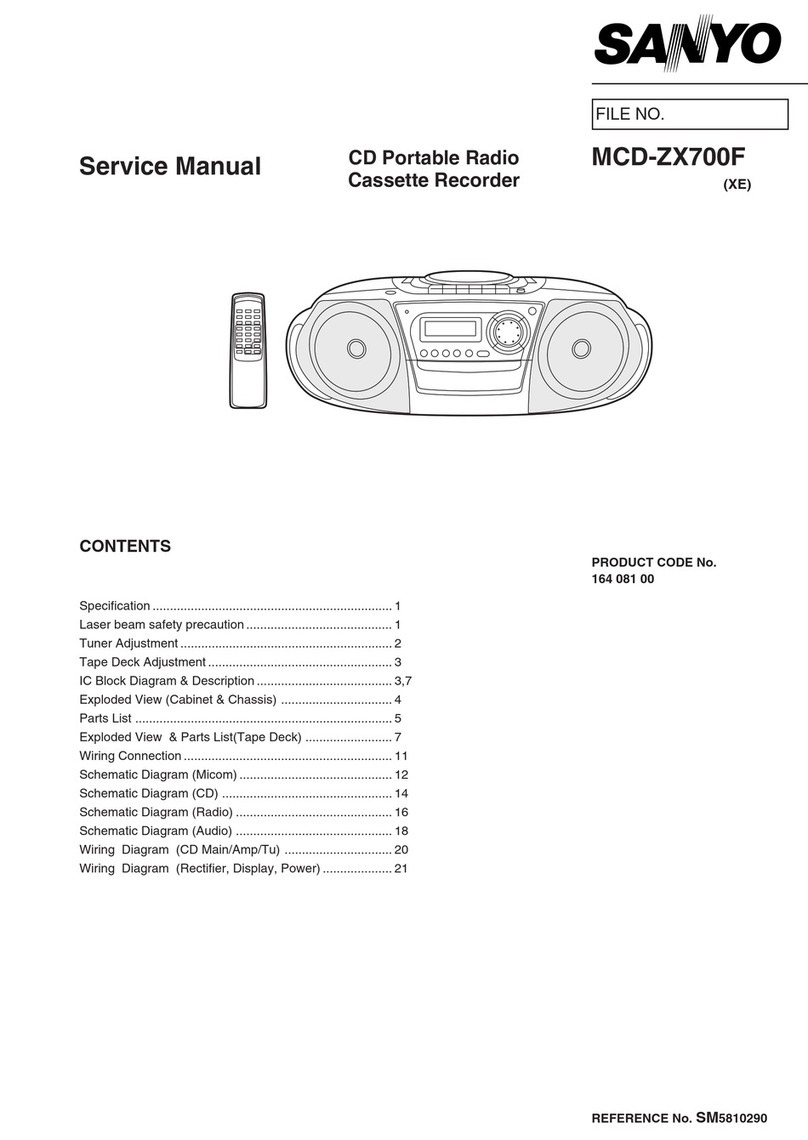=
PLAYBACK SENSITIVITY ADJUSTMENT
(See Figure 6-l
)
1. Connect VTVM between test point
TP103
(or TP203)
and ground.
2. Push the tape selector switch SW4 and set the Dolby
NR
switch SW3 at off position.
3. Put a test tape (TEAC, MTT-150,400 Hz, 200
pWb/mm,
recorded) into the unit and play it.
4. Adjust semi-variable resistor
VRlOl
(or VR201) so that
580 mV will be indicated on VTVM.
n
RECORD/PLAYBACK SENSITIVITY ADJUSTMENT
(See Figure 6-2)
*
SW7 is not used for model RT-31H.
1. Connect VTVM between test point TP103 (or TP203)
and ground.
2. Connect CR oscillator to the line input socket, and
apply the signal of oscillation frequency 400 Hz, output
level -13
dB
(0
dB
=
1
V) to the unit.
3. Push tape selector switch SW4 and set the Dolby
NR
switch SW3 at off position.
4. Put a normal tape (TEAC, MTT-502, blank) into the
unit, and place it in record mode. Adjust the record
level control VRIOZ (or VR202) so that the reading
of VTVM becomes 390 mV.
5. Playback the normal tape which has been recorded
in the step 4, and adjust the semi-variable resistor
VR103 (or VR203) so that the reading of VTVM be-
comes 410 mV. Repeat the steps 4 and 5 until the
VTVM reading stays in the range from 360
mV
to
460
mV.
6. Put a
CrOs
tape (MAXELL, UDXL
II)
into the unit.
7. Push the tape selector switch SW5, and place the unit in
record mode.
8. Playback the
CrOz
tape which has been recorded in the
step 7, and make sure VTVM indicates the reading
within 326 mV to 487 mV.
m
PEAK LEVEL DISPLAY METER SENSITIVITY ADJUST-
MENT
(See Figure 6-3)
1,
Connect VTVM between test point TPI 02 (or
TP202)
and ground.
2. Set the Dolby
NR
switch SW3 at off position and
input selector switch SW2 at “LINE” position.
3. Connect CR oscillator to the line input socket, and
apply the signal of oscillation frequency
1
kHz,
316
mV
(-10
dB)
to the unit, placing it in record mode.
4. Adjust record level control VR102 (or VR202) so that
VTVM will indicate 580 mV (-4.7 dB).
5. Change the output level of CR oscillator from 316
mV
(-10
dB)
to 305 mV (-10.3
dB),
then adjust the
semivariable resistor VR601 (or VR602) so that the
segments
(LEDs)
up to 0
dB
of the peak level display
meter light up.
6. Again change the output level of CR oscillator from
305 mV (-10.3
dB)
to 295 mV (-10.6 dB), then see
that the segments up to -3
dB
remain lit.
n
DOLBY NOISE REDUCTION CIRCUIT CHECK
(See Figure 6-4)
1. Connect VTVM between test point TPI 03 (or
TP203)
and ground.
2. Push the tape selector switch SW4, and set the input
selector switch
SW2
at LINE
posi;tion
and
Dolby
NR
switch SW3 at off position.
3. Connect CR oscillator to the line input socket, and
apply the signal of oscillation frequency
100
Hz, output
level -35
dB
(0
dB
=
1
V),
to the unit.
Figure 6-l
J
9. Put a metal tape (TDK, AC-71
I)
into the unit.
10.
Push the tape selector switch SW6, and place the unit
in record mode.
11. Playback the metal tape which has been recorded in the
step
10,
and make sure VTVM indicates the reading
within 326
mV
to 487 mV.
12. Put a Fe-Cr tape (SONY, CS-30) into the unit.
13. Push the tape selector switch SW7 and place the unit
in record mode.
14. Playback the Fe-Cr tape which has been recorded
in the step
10,
and make sure VTVM indicates the
reading within 326 mV to 487 mV.
Line
l”PYf
sccket
so1
or
so2
Figure 6-2
Figure 6-3
Frequency
1
kHz 10
kHz
12.5
kHz
Indicated
45.7 to 44.5 to 42.6 to
Value 81
mV
70 mV 68.2 mV
A
Table
1
Frequency
1
kHz
10
kHz
12.5
kHz
Indicated
8.2 to 13.7 to 13.5 to
Value 16.4
mV
24.9 mV 23.4 mV
Table 2
Figure 6-4
-6-
